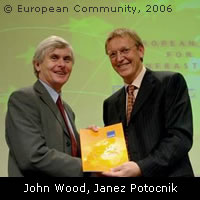European Roadmap for Research Infrastructures launched
The European Strategy Forum on Research Infrastructures (ESFRI) has presented the first ever European Roadmap for Research Infrastructures. The document, which has been two years in the making, outlines 35 research infrastructure projects identified as being vital to the development of science and innovation in Europe. Research infrastructures are large-scale facilities, major pieces of research equipment or databases and networks that help scientists in their work. Examples in the Roadmap include the European Extremely Large Telescope, a European icebreaker for Polar research, a network of clinical research centres and an upgrade of the European Social Survey. However the costs of setting up and running these infrastructures are usually too high for one institution or even one country to bear alone. 'Europe has a long-standing tradition of excellence in research,' commented ESFRI Chairman, Professor John Wood. 'However if we don't come together we will fail to reach critical mass.' The Roadmap started life in November 2004, when the EU's Competitiveness Ministers asked ESFRI to develop a long-term, European view on the development of research infrastructures of pan-European interest. Since then over 1,000 experts have contributed to the process, identifying vital infrastructure projects in seven fields: environmental sciences; energy; materials sciences; astrophysics, astronomy, particle and nuclear physics; biomedical and life sciences; social sciences and humanities and computation and data treatment. 'Research infrastructures are a critical element of building research excellence in Europe,' added European Science and Research Commissioner Janez Potocnik. 'Not only can they support the work of European scientists, but world class facilities attract the best scientific minds from around the world.' Mr Potocnik noted that the roadmap was important not just for Europe, but for the whole world, highlighting how many everyday items, including mobile phones and satellite navigation systems, owe their existence to work in research infrastructures. The Commissioner emphasised that while the EU would be able to provide some financial support to the projects, the bulk of the funding would have to come from the Member States. However, he noted that all the projects in the roadmap had backing from some of the Member States, and he would shortly be writing to the national research ministers to formally ask for their support. €1.7 billion has been earmarked for research infrastructure projects under the Seventh Framework Programme; the total estimated cost of all 35 projects comes to over €13 billion. Looking to the future, both Professor Wood and Mr Potocnik emphasised that the production of the roadmap was not the end of the process, but a tool to start a debate on research infrastructures in Europe. ESFRI has also embarked on discussions with other regions around the world as some of the projects require a global approach. Meanwhile the working groups will continue to assess new proposals and provide advice to ESFRI on how to get the proposed research infrastructures up and running.



